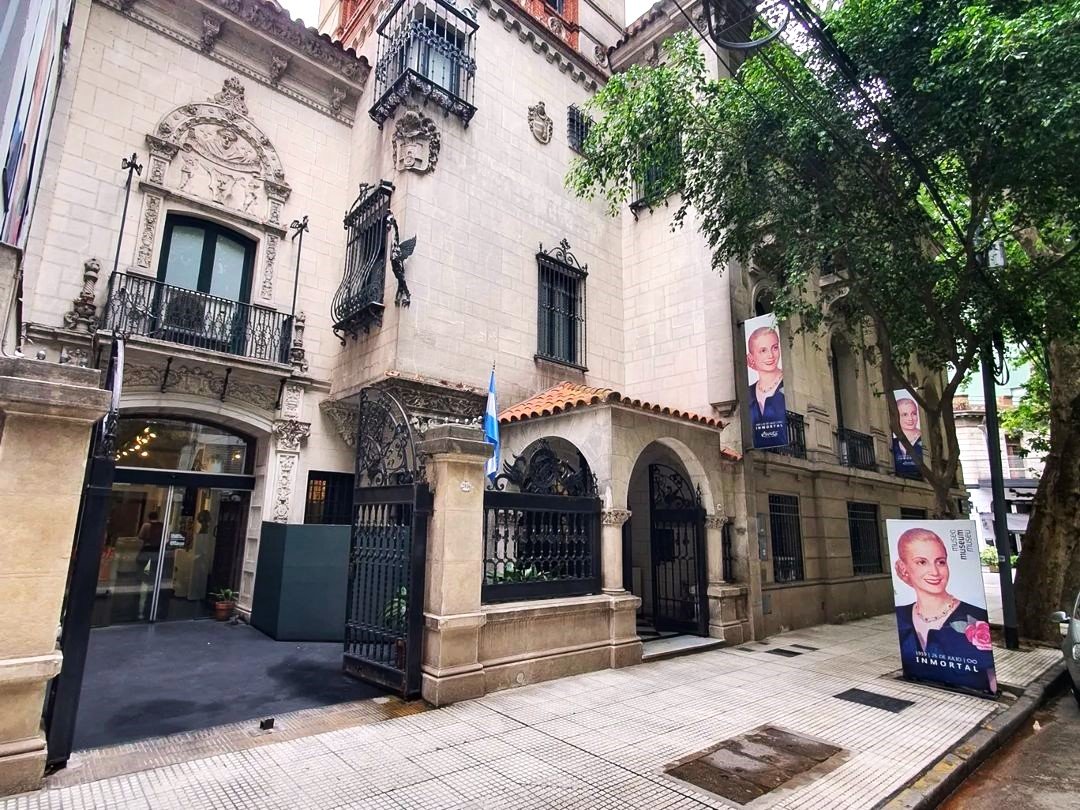Evita Peron’s Legacy is On Display at Museums and Monuments across Argentina - Buenos Aires, Argentina
What is It- Evita Peron was the wife of Argentina’s President, General Juan Peron, who led the country at various times from the 1950s to the 1970s. General Peron launched the populist Peronist political and labor movement that affects politics in Argentina to this day. Meanwhile, Evita Duarte rose dramatically from being the child of a broken family living in the provincial Argentinian town of Los Toldos. She became a movie actress, found fame as Argentina’s glamorous first lady, and emerged as a social justice advocate for the poor and the sick. She was briefly a candidate for Vice President in 1951 and created a legacy that likely contributed to two female Presidents serving Argentina thereafter. Evita’s dramatic life and early death at age 33 from cancer was depicted in a popular Broadway play and, in the movie, “Evita”.
Despite efforts by past governments to remove both her and her body from Argentina’s memory, Evita remains a beloved figure to the country’s poor and those involved in social work and the labor movement. There are at least four places in Buenos Aires where her complex life and legacy can be viewed:
The Museo Evita- A modern museum called the Museo Evita is housed in a Renaissance style townhouse in the Palermo section of the city. The building once served as a refuge for women operated by Evita’s social foundation focuses solely on her life. This museum focuses on her efforts to improve the education, voting rights, and wages of working class and impoverished women in the country. The museum also displays photographs, clothing, jewelry, and personal items which provide background on the fascinating personality which led people to follow her activities and lifestyle. While many items are self-explanatory, guided tours in English can be arranged by prior reservation.
The Bicentennial Museum- The Bicentennial Museum located in the rear basement of the Casa Rosada palace in restored sections of the colonial fort is a modern facility that has documents and pictures from Argentina’s history along with displays that look at the lives of the country’s leaders and heroes. The exhibits about the Perons show how President Peron and Evita understood the power of personality and the importance of the media during the 1940s and 1950s in a way that was far ahead of her time. While there is memorabilia and old films about her husband, it is clear who was the star of the show. Touring this museum is a special experience which ends with a classic painting of the Perons.
Duarte Family Tomb at Recoleta Cemetery- The Recoleta Cemetery is one of the most popular destinations for visitors to Buenos Aires, and every one of them stop at the mausoleum of the Duarte family. After a long and complicated history, Evita’s embalmed body was relocated from Europe to this site in the 1970s and buried in a marble crypt more than twenty feet underground. A simple bronze plaque outside the mausoleum commemorates her. Nevertheless, each day dozens of people in the visiting crowds leave flowers, notes, and photos at the site in personal remembrances of her.
Argentina’s Currency – In 2012, Argentina’s female president Cristina Fernandez de Kirchner announced that Evita’s picture and a picture of her social work for the Argentinian people would appear on the new 100-peso bills of the country. While the 100-peso bill is worth only about a dime in U.S. currency, the decision was an important honor for her still controversial legacy as a symbol of Argentina.




